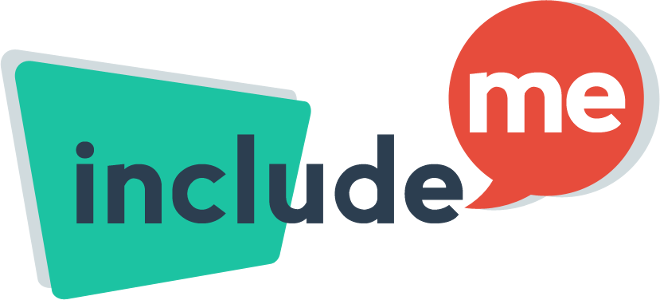Length of session
LEARNING OBJECTIVES
- Name a variety of emotions people experience.
- Understand that emotions are triggered by situations and people.
- Describe emotions people might experience in various situations.
- Understand how recognizing emotions contributes to positive relationships.
Materials Needed
Visual means for recording ideas
(paper, chart paper, or white/chalk board and markers/chalk)
For Information to Share
Paper and pencils, markers and flip-chart
Tasks to complete before the workshop:
Post four pieces of chart paper in four locations in the room. They should be far enough apart to allow small groups to sit or stand around them and write.
On each piece of chart paper, write one of the following emotions:
Demonstration
duration of activity
Tell participants
you are going to pantomime the topic for today’s session – emotions.
Ask participants to observe your behaviors, gestures, and facial expressions and name the emotion or feeling being demonstrated.
Demonstrate an emotion, such as anger, through your body language and facial expressions.
As participants name emotions, record them on chart paper or the white/chalk board. Several different emotions or feelings might be suggested such as angry, upset, and mad.
Repeat the procedure with several emotions. Include angry, happy, sad, and surprised. Summarize by stating that everyone has many different emotions every day.
Facilitator’s Input and Discussion
duration of activity
Explain what is meant by the word “Emotion.”
Emotions are the mental and physical reactions people have to situations and people around them.
Facilitator’s Note
Not all people have the same emotional response to the same situation. Emotional responses vary depending on many factors, such as age, experiences, attitude, hormonal influence, use of certain medications, and so on.
Post the four prepared pieces of chart paper with the titles “angry,”“happy,”“sad,” and “surprised,” in different locations in the room.
Divide participants into four groups by counting off and have one group stand at each piece of chart paper.
Within each small group, ask the person with the largest shoe to be the leader. The leader will keep the group focused on the task. Ask the person to the right of the leader to be the recorder. He or she will take notes for the small group.
Ask each group to record as many words as possible that mean close to the same thing as the emotion word on their chart. In other words, on the “Happy” chart, they might write “joyful,” “excited,” etc.
Explain that, if they can use a word in this sentence, “I feel ____,” it is probably a word that describes an emotion. After one or two minutes, ask the groups to rotate to a different chart by moving to the chart on their left.
Give them one or two minutes to read the emotion words present, then add emotion words to their second chart.
Repeat the procedure until all of the groups have visited all of the charts. Review the charts by highlighting several words from each chart or have the groups walk from chart to chart reviewing the words.
Facilitator’s Note
Be sure to only accept words that describe an emotion. If the groups suggest words that do not describe an emotion, clarify by using the word in the sentence, “I feel ,” and suggest an alternate word that is an emotion.
Explain that emotions are normal reactions to situations and people. Everyone experiences these emotions. People experience these emotions at work, at home, with friends, and even when they are alone thinking about situations or events.
how they might feel in each of the following situations. Choose three that are appropriate for the culture and group with which you are working.
Ask participants
Try to elicit
more than one emotion word for each situation.
- You have been assigned a difficult job at work.
- You just heard a friend is very ill.
- You have a family wedding to attend.
- Your supervisor yells at you.
- Your supervisor tells you he or she noticed what a good job you are doing.
- You have desperately been looking for a micro finance opportunity for your enterprise, but have been unable to find one.
- Someone says something that embarrasses you.
- Your colleague has just asked you to help with an important job on his or her project.
Emphasize that sometimes the same situation can elicit two very different feelings. For example, you may feel happy to be involved in your colleague’s project and nervous about doing the job well. Not everyone responds to the same situation in the same way. Each person’s life experiences, education, self-confidence, and family background, help to determine how he or she responds.Sometimes it is easy to identify how you feel. Other times, feelings can be confusing. A person may not always respond emotionally the same way each time he or she experiences similar situations. Recognizing how your body is responding can help a person identify what emotion he or she is experiencing. For example, a person might smile, act friendly and energetic, and walk with a bounce when feeling happy. A person might stomp around and yell when feeling angry.
While emotions are normal, they can sometimes be hard to manage. Usually very strong emotions – either positive or negative – are more difficult to manage. The first step to effectively managing emotions is to recognize and name them. Indicate their lists of emotion words will help them.
Facilitator’s Note
Discussion
duration of activity
Ask participants
What are the advantages of being able to identify how you feel?
How do you think your relationships with others are affected when you can identify your feelings?
Ask participants to think about one or two recent situations that elicited emotions. Encourage them to select situations they will be comfortable sharing with their group. Encourage participants to notice the emotions they experience and what situations or people trigger the emotions.
Explain that identifying emotions and understanding the experiences surrounding the emotions will help them manage emotions more effectively in the workplace
















Recent tips